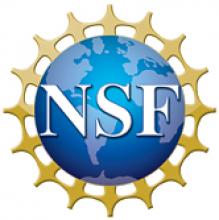Resources
SusChEM (Sustainable Chemistry, Chemical Engineering, Materials) Workshop
The SusChEM workshop brought chemists, chemical engineers, materials scientists and materials engineers together to identify the research challenges and to chart possible courses to increase the sustainability of key chemical and materials manufacturing sectors and to define meaningful metrics for assessing sustainability. Check out the link to view the program. A report on the workshop will be avaialble on the website soon.
Department of Energy 2011 Critical Materials Strategy
This report examines the role that rare earth metals and other key materials play in clean energy technologies such as wind turbines, electric vehicles, solar cells and energy-efficient lighting. The report found that several clean energy technologies use materials at risk of supply disruptions in the short term, with risks generally decreasing in the medium and long terms. Supply challenges for five rare earth metals (dysprosium, neodymium, terbium, europium and yttrium) may affect clean energy technology deployment in the years ahead.
ARPA-E Workshop Report on Rare Earths and Critical Materials
During this workshop, experts from across science and engineering were brought together to identify possible new approaches and pathways to addressing technical challenges in critical materials across these fields. The workshop will consisted of five plenary talks and four breakout sessions. The breakout sessions ran concurrently in groups of two and focused on:
- Supply / Material processing
- Magnets and magnetic systems / motors and generators
- Phosphors and general illumination
- Catalysts and separators
AIChE Annual Meeting special session on Critical Materials Supply Chain and Sustainability Organized by the Research and New Technology Committee (RANTC)
Strategic and critical mineral supply chains are nationally recognized as being important to the US manufacturing industry, energy supply, and national defense. The White House recently established a subcommittee for strategic and critical mineral supply chains to facilitate a coordinated effort across federal agencies to identify and address important policy implications arising from strategic minerals supply issues. The U.S. Department of Energy recently released the second edition of their Critical Materials Strategy to address the challenge associated with components used in new clean energy technologies being at risk due to their location, vulnerability to supply disruptions, and lack of suitable substitutes. Similarly, the U.S. Department of Defense has recently developed a National Strategic Materials Sustainability Plan. Many facets of the strategic and critical materials supply chain involve “chemistry” or “chemical engineering” from novel digestion and separation processes to reduction and refining to utilization in “old” and “new” products and technologies as well as recycle and reuse. This session includes papers and a round-table discussion to identify the issues and opportunities associated with the critical materials supply and sustainability.
PDF Copy of the Symposium Program



